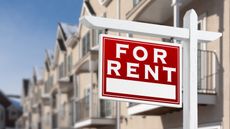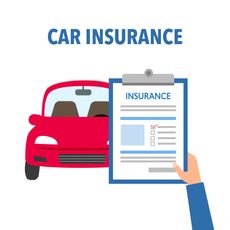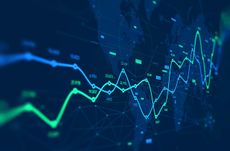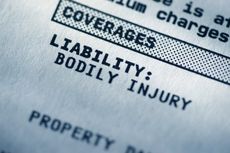Kiplinger's Retail Outlook: Consumer Spending Likely to Ease
Consumer spending is still rising after the Prime Day surge but should start to slow.
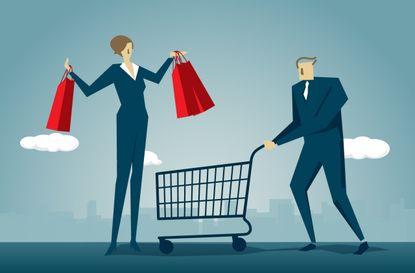

Kiplinger's Economic Outlooks are written by the staff of our weekly Kiplinger Letter and are unavailable elsewhere. Click here for a free issue of The Kiplinger Letter or for more information.
Retail and food service sales excluding gasoline rose 0.2% in August, maintaining the higher sales level of the Amazon Prime Day sale in July. Online sales were flat, and in-store sales rose 0.2%. Some of the impact of the July surge was taken away by a downward revision to June and July sales, but sales ex-gasoline have still risen at a 6.1% annual rate over the past five months. In-store sales have been growing more modestly, however, at only a 2.5% rate during that time.
August sales were good for clothing (+0.9%), electronics and appliances (+0.7%), and health and personal care (+0.5%) stores. Motor vehicle sales rose 0.3%. Sales declined for sporting goods and hobby (-1.6%), furniture (-1.0%) and miscellaneous (-1.3%) stores.

Sign up for Kiplinger’s Free E-Newsletters
Profit and prosper with the best of expert advice on investing, taxes, retirement, personal finance and more - straight to your e-mail.
Profit and prosper with the best of expert advice - straight to your e-mail.
Consumer spending on services has been growing steadily, rising 0.4% in July after adjusting for inflation. Even if the economy slows, services spending is likely to stay on its uptrend, because of the change in consumers’ buying patterns. Data on services spending are typically released at the end of each month, with the report for August being scheduled for September 29. (Only food services are included in the retail sales report discussed here.)
Strong consumer spending is keeping the economy out of recession, but we expect a slowdown soon. The economy in general is due to cool off in the next six months, with a gradually weakening labor market. Savings rates have been much lower than their historical norms, and will likely begin to rise slowly. Student loan repayments are starting up in October, and along with higher interest rates on consumer loans and rising gasoline prices, may take away from households’ spending power. But consumers have surprised analysts this year with the resilience of their spending, so any slowdown is not likely to cause a recession for now.
Goods spending is also due to slow eventually because, at some point, consumers will switch to buying more services as their need for goods becomes satiated. Purchases of goods soared at the beginning of the pandemic in 2020. While services have picked up since then, the share of goods in household spending is still well above its pre-pandemic norm. That suggests a coming drop in goods buying as the economy slows.
Related content

David is both staff economist and reporter for The Kiplinger Letter, overseeing Kiplinger forecasts for the U.S. and world economies. Previously, he was senior principal economist in the Center for Forecasting and Modeling at IHS/GlobalInsight, and an economist in the Chief Economist's Office of the U.S. Department of Commerce. David has co-written weekly reports on economic conditions since 1992, and has forecasted GDP and its components since 1995, beating the Blue Chip Indicators forecasts two-thirds of the time. David is a Certified Business Economist as recognized by the National Association for Business Economics. He has two master's degrees and is ABD in economics from the University of North Carolina at Chapel Hill.
-
-
 Putting Catch-Up Contributions Into a Roth 401(k) Isn't a Bad Idea
Putting Catch-Up Contributions Into a Roth 401(k) Isn't a Bad IdeaRoth 401(k) High earners will be required to put their catch-up contributions in a Roth 401(k).
By Sandra Block Published
-
 Work Email Phishing Scams on the Rise: The Kiplinger Letter
Work Email Phishing Scams on the Rise: The Kiplinger LetterThe Kiplinger Letter Phishing scam emails continue to plague companies despite utilizing powerful email security tools.
By John Miley Published
-
 Work Email Phishing Scams on the Rise: The Kiplinger Letter
Work Email Phishing Scams on the Rise: The Kiplinger LetterThe Kiplinger Letter Phishing scam emails continue to plague companies despite utilizing powerful email security tools.
By John Miley Published
-
 Rental Market Will Slow Through 2023: The Kiplinger Letter
Rental Market Will Slow Through 2023: The Kiplinger LetterThe Kiplinger Letter Expected growth in the rental market is likely to remain slow for the rest of the year amid a slow housing market and cooling economy.
By Rodrigo Sermeño Published
-
 What Is Comprehensive Coverage and What Does It Cover?
What Is Comprehensive Coverage and What Does It Cover?insurance This grab bag of coverages can protect you and your vehicle from theft, fire and forces of nature.
By Donna LeValley Published
-
 Tech Giants Look to Curb AI's Energy Demands: The Kiplinger Letter
Tech Giants Look to Curb AI's Energy Demands: The Kiplinger LetterThe Kiplinger Letter The expansion in AI is pushing tech giants to explore new ways to reduce energy use, while also providing energy transparency.
By John Miley Published
-
 Passport Processing Times Speed Up: The Kiplinger Letter
Passport Processing Times Speed Up: The Kiplinger LetterThe Kiplinger Letter The State Department credits an increase in staff and new technology with shrinking processing times.
By Sean Lengell Published
-
 White House Aims to Limit Access to Short-Term Health Plans: The Kiplinger Letter
White House Aims to Limit Access to Short-Term Health Plans: The Kiplinger LetterThe Kiplinger Letter The Biden administration's draft rule would restore several Obama-era regulations.
By Matthew Housiaux Published
-
 What Is Liability Insurance and What Does It Cover?
What Is Liability Insurance and What Does It Cover?insurance Liability insurance protects you if you injure someone else or damage their property with your car.
By Donna LeValley Published
-
 New Employment Guidance Proposed on Hostile Work Practices: The Kiplinger Letter
New Employment Guidance Proposed on Hostile Work Practices: The Kiplinger LetterThe Kiplinger Letter New guidelines for employers fueled by a sharp increase in employment discrimination lawsuits in 2023.
By Matthew Housiaux Published


